Note
Access to this page requires authorization. You can try signing in or changing directories.
Access to this page requires authorization. You can try changing directories.
In this article, you learn how to integrate Meta Networks Connector with Microsoft Entra ID. When you integrate Meta Networks Connector with Microsoft Entra ID, you can:
- Control in Microsoft Entra ID who has access to Meta Networks Connector.
- Enable your users to be automatically signed-in to Meta Networks Connector with their Microsoft Entra accounts.
- Manage your accounts in one central location.
Prerequisites
The scenario outlined in this article assumes that you already have the following prerequisites:
- A Microsoft Entra user account with an active subscription. If you don't already have one, you can Create an account for free.
- One of the following roles:
- Meta Networks Connector single sign-on (SSO) enabled subscription.
Scenario description
In this article, you configure and test Microsoft Entra single sign-on in a test environment.
Meta Networks Connector supports SP and IDP initiated SSO.
Meta Networks Connector supports Just In Time user provisioning.
Meta Networks Connector supports Automated user provisioning.
Add Meta Networks Connector from the gallery
To configure the integration of Meta Networks Connector into Microsoft Entra ID, you need to add Meta Networks Connector from the gallery to your list of managed SaaS apps.
- Sign in to the Microsoft Entra admin center as at least a Cloud Application Administrator.
- Browse to Entra ID > Enterprise apps > New application.
- In the Add from the gallery section, type Meta Networks Connector in the search box.
- Select Meta Networks Connector from results panel and then add the app. Wait a few seconds while the app is added to your tenant.
Alternatively, you can also use the Enterprise App Configuration Wizard. In this wizard, you can add an application to your tenant, add users/groups to the app, assign roles, and walk through the SSO configuration as well. Learn more about Microsoft 365 wizards.
Configure and test Microsoft Entra SSO for Meta Networks Connector
Configure and test Microsoft Entra SSO with Meta Networks Connector using a test user called B.Simon. For SSO to work, you need to establish a link relationship between a Microsoft Entra user and the related user in Meta Networks Connector.
To configure and test Microsoft Entra SSO with Meta Networks Connector, perform the following steps:
- Configure Microsoft Entra SSO - to enable your users to use this feature.
- Create a Microsoft Entra test user - to test Microsoft Entra single sign-on with B.Simon.
- Assign the Microsoft Entra test user - to enable B.Simon to use Microsoft Entra single sign-on.
- Configure Meta Networks Connector SSO - to configure the single sign-on settings on application side.
- Create Meta Networks Connector test user - to have a counterpart of B.Simon in Meta Networks Connector that's linked to the Microsoft Entra representation of user.
- Test SSO - to verify whether the configuration works.
Configure Microsoft Entra SSO
Follow these steps to enable Microsoft Entra SSO.
Sign in to the Microsoft Entra admin center as at least a Cloud Application Administrator.
Browse to Entra ID > Enterprise apps > Meta Networks Connector > Single sign-on.
On the Select a single sign-on method page, select SAML.
On the Set up single sign-on with SAML page, select the pencil icon for Basic SAML Configuration to edit the settings.
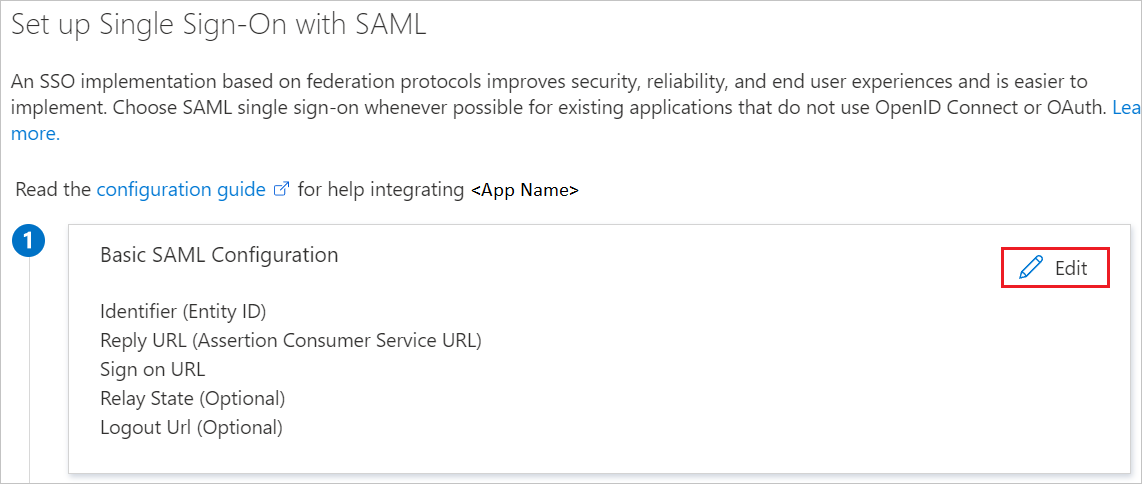
On the Basic SAML Configuration section, If you wish to configure the application in IDP initiated mode, perform the following steps:
a. In the Identifier text box, type a URL using the following pattern:
https://login.nsof.io/v1/<ORGANIZATION-SHORT-NAME>/saml/metadatab. In the Reply URL text box, type a URL using the following pattern:
https://login.nsof.io/v1/<ORGANIZATION-SHORT-NAME>/sso/samlSelect Set additional URLs and perform the following step if you wish to configure the application in SP initiated mode:
a. In the Sign-on URL text box, type a URL using the following pattern:
https://<ORGANIZATION-SHORT-NAME>.metanetworks.com/loginb. In the Relay State textbox, type a URL using the following pattern:
https://<ORGANIZATION-SHORT-NAME>.metanetworks.com/#/Note
These values aren't real. Update these values with the actual Identifier, Reply URL, and Sign-On URL are explained later in the article.
Meta Networks Connector application expects the SAML assertions in a specific format, which requires you to add custom attribute mappings to your SAML token attributes configuration. The following screenshot shows the list of default attributes. Select Edit icon to open User Attributes dialog.

In addition to above, Meta Networks Connector application expects few more attributes to be passed back in SAML response. In the User Claims section on the User Attributes dialog, perform the following steps to add SAML token attribute as shown in the below table:
Name Source attribute Namespace firstname user.givenname lastname user.surname emailaddress user.mail http://schemas.xmlsoap.org/ws/2005/05/identity/claimsname user.userprincipalname http://schemas.xmlsoap.org/ws/2005/05/identity/claimsphone user.telephonenumber a. Select Add new claim to open the Manage user claims dialog.
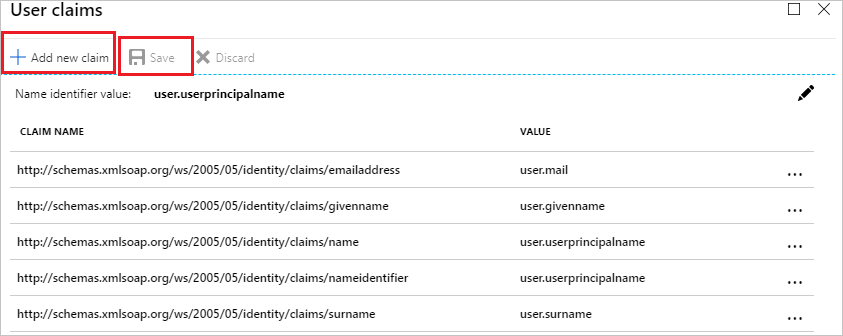
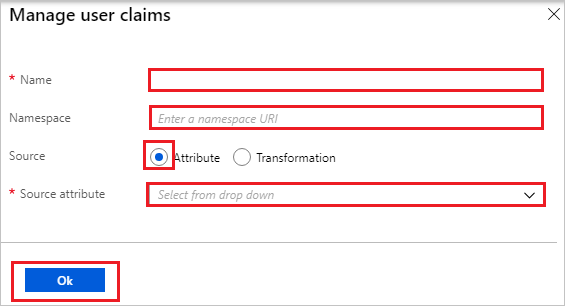
b. In the Name textbox, type the attribute name shown for that row.
c. Leave the Namespace blank.
d. Select Source as Attribute.
e. From the Source attribute list, type the attribute value shown for that row.
f. Select Ok
g. Select Save.
On the Set up Single Sign-On with SAML page, in the SAML Signing Certificate section, select Download to download the Certificate (Base64) from the given options as per your requirement and save it on your computer.

On the Set up Meta Networks Connector section, copy the appropriate URL(s) as per your requirement.

Create and assign Microsoft Entra test user
Follow the guidelines in the create and assign a user account quickstart to create a test user account called B.Simon.
Configure Meta Networks Connector SSO
Open a new tab in your browser and log in to your Meta Networks Connector administrator account.
Note
Meta Networks Connector is a secure system. So before accessing their portal you need to get your public IP address added to an allow list on their side. To get your public IP address,follow the below link specified here. Send your IP address to the Meta Networks Connector Client support team to get your IP address added to an allow list.
Go to Administrator and select Settings.

Make sure Log Internet Traffic and Force VPN MFA are set to off.
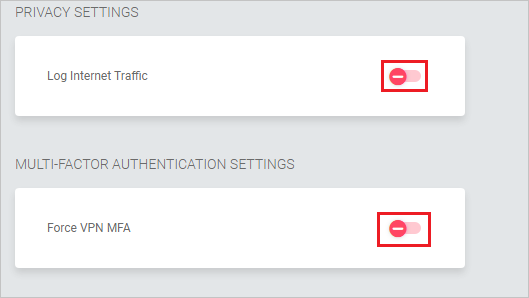
Go to Administrator and select SAML.
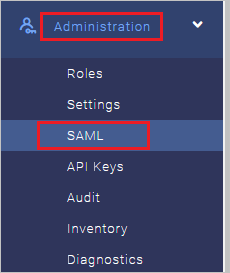
Perform the following steps on the DETAILS page:
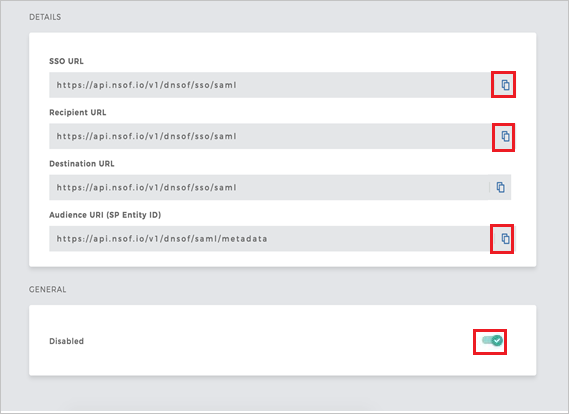
a. Copy SSO URL value and paste it into the Sign-In URL textbox in the Meta Networks Connector Domain and URLs section.
b. Copy Recipient URL value and paste it into the Reply URL textbox in the Meta Networks Connector Domain and URLs section.
c. Copy Audience URI (SP Entity ID) value and paste it into the Identifier (Entity ID) textbox in the Meta Networks Connector Domain and URLs section.
d. Enable the SAML.
On the GENERAL tab and perform the following steps:
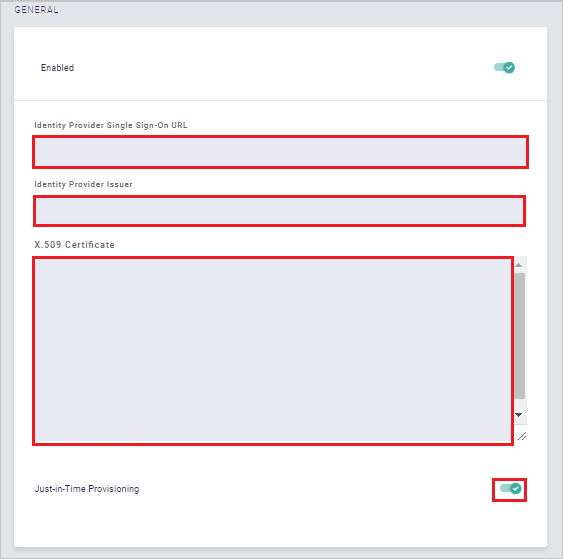
a. In the Identity Provider Single Sign-On URL, paste the Login URL value which you copied previously.
b. In the Identity Provider Issuer, paste the Microsoft Entra Identifier value which you copied previously.
c. Open the downloaded certificate from Azure portal in notepad, paste it into the X.509 Certificate textbox.
d. Enable the Just-in-Time Provisioning.
Create Meta Networks Connector test user
In this section, a user called Britta Simon is created in Meta Networks Connector. Meta Networks Connector supports just-in-time provisioning, which is enabled by default. There's no action item for you in this section. If a user doesn't already exist in Meta Networks Connector, a new one is created when you attempt to access Meta Networks Connector.
Note
If you need to create a user manually, contact Meta Networks Connector Client support team.
Meta Networks also supports automatic user provisioning, you can find more details here on how to configure automatic user provisioning.
Test SSO
In this section, you test your Microsoft Entra single sign-on configuration with following options.
SP initiated:
Select Test this application, this option redirects to Meta Networks Connector Sign on URL where you can initiate the login flow.
Go to Meta Networks Connector Sign-on URL directly and initiate the login flow from there.
IDP initiated:
- Select Test this application, and you should be automatically signed in to the Meta Networks Connector for which you set up the SSO.
You can also use Microsoft My Apps to test the application in any mode. When you select the Meta Networks Connector tile in the My Apps, if configured in SP mode you would be redirected to the application sign on page for initiating the login flow and if configured in IDP mode, you should be automatically signed in to the Meta Networks Connector for which you set up the SSO. For more information about the My Apps, see Introduction to the My Apps.
Related content
Once you configure Meta Networks Connector you can enforce session control, which protects exfiltration and infiltration of your organization’s sensitive data in real time. Session control extends from Conditional Access. Learn how to enforce session control with Microsoft Defender for Cloud Apps.